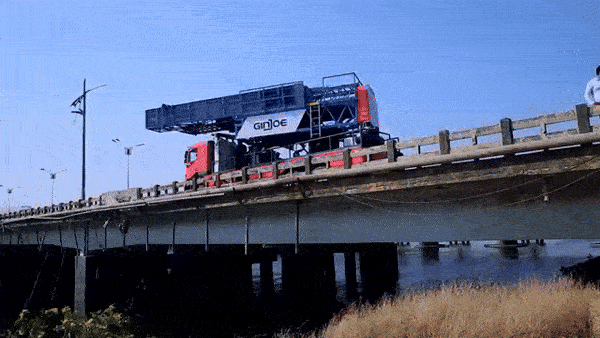Mobile Bridge Inspection Unit: BRIDGE MAINTENANCE For Pwd
- Sangharsh
- Case Study
Home » Case Study's » Mobile Bridge Inspection Unit For Bridge Maintenance
Table of Contents
Introduction
Bridge maintenance poses a significant challenge worldwide. Accessibility and safety issues compound the difficulty of inspecting and maintaining these critical structures. This case study explores an innovative solution: the Mobile Bridge Inspection Unit (MBIU). Developed by Nandan GSE, the MBIU has transformed bridge inspection processes, offering a novel approach to overcoming traditional barriers.
Problem
The Public Works Department (PWD) faced a daunting task. They needed to inspect countless bridges for cracks and perform scheduled maintenance. However, the challenge was not just the volume of work. Many bridges stood over water bodies or deep valleys, making access from below difficult, if not impossible. Boats offered unstable platforms, and dry riverbeds increased the height to over 20 meters. Traditional aerial equipment could not reach these heights safely with an inspector on board.
Solution
Nandan GSE stepped up with the MBIU. Designed on a 32-tonne truck, the MBIU boasts extendable arms and platforms. These features allow it to reach up to 15 meters in width from atop the bridge. Inspectors can thus position themselves beneath or alongside bridge components. They conduct thorough inspections without worrying about what lies below. Moreover, the MBIU includes a control feature. It enables the inspector to operate the vehicle while on the platform. This feature saves time, enhancing efficiency.

Result
The MBIU has proven to be a game-changer. It has made bridge maintenance safer, more accessible, and more efficient. Inspectors can now tackle any bridge, regardless of the terrain or water body below. This innovative unit ensures thorough inspections. It supports the maintenance of these vital structures. As a result, the PWD and government can ensure the longevity and safety of bridges. The MBIU stands as a testament to innovation in the face of complex challenges.
In summary, the Mobile Bridge Inspection Unit has not only solved a critical problem but also set a new standard in bridge maintenance. Its success underscores the power of innovative thinking and technological advancement in public works and infrastructure management.
Share This Case Study
Contact Us
Please fill up the below details our executive will call you shortly.
